| NUWARA ELIYA RACECOURSE | |||
The only remaining racecourse in Sri Lanka is situated in one of the coolest areas of Sri Lanka at Nuwara Eliya, some 1868 metres above sea level, making it one of the highest in the world, and is run by the Sri Lanka Turf Club. Racing was brought to the island by the British Colonials. Records show that racing took place in Sri Lanka, then Ceylon, as early as the 1840's when John Baker created a thoroughbred training course in the vicinity of his home. English thoroughbreds were imported and a racecourse established in the capital Colombo. By 1866 the Ceylon Turf Club was firmly established and began to keep accurate records of events. However, the first occasion when results were recorded ay Nuwara Eliya racecourse was in 1875, the meeting being administered by the Nuwara Eliya Gymkhana Club. The Ceylon Turf Club was one of the first to make use of the Automatic Totalisor system and was certainly doing so by the mid 1920's. The track has a circumference of 9 furlongs, including a 333 metre home straight, with its principal race, the Governor's Cup, run each April, which can boast a history dating back more than 130 years. |
|||
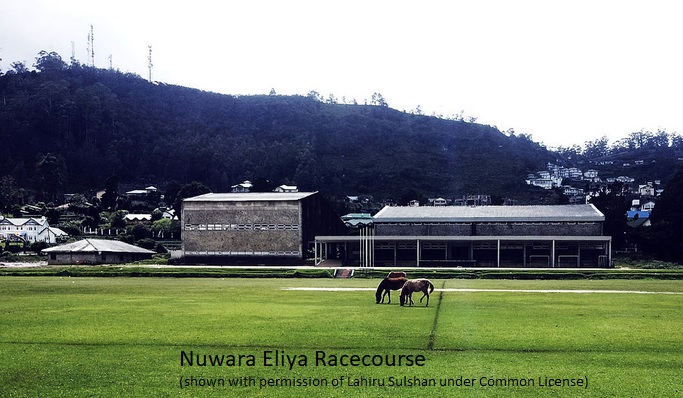 |
In the first decade of the 20th century the Governor of Ceylon was Sir Henry Edward McCallum, who was born in 1852 and died in 1919. In 1910 he suggested that the Nuwara Eliya Gymkhana Club should be replaced by the Ceylon Turf Club, located in the capital Colombo, to administer the races at Nuwara Eliya and to carry out improvements at the racecourse. This they duly did, increasing prize money, improving the quality of racing, introducing top grade races with increased prize money, and improving the facilities. The course boasted an old, yet historic grandstand where the top tier was reserved for the Stewards and racecourse members. Just after the Second World War ended both Colombo racecourse and Nuwara Eliya racecourse closed in 1956, and it was a further quarter of a century before Nuwara Eliya racecourse reopened. |
||
| Sir Ernest de Silva was president of the Ceylon Turf Club and managed to win 2 Governor's Cups. His first success was with Louvello and he followed this up with L'Allegro. The Governor's Cup boasts a long, illustrious history. In 1894 it was won by an Australian horse, Master Walter, ridden by J.Wall and a picture of the horse is shown below courtesy of Shane Turner. | 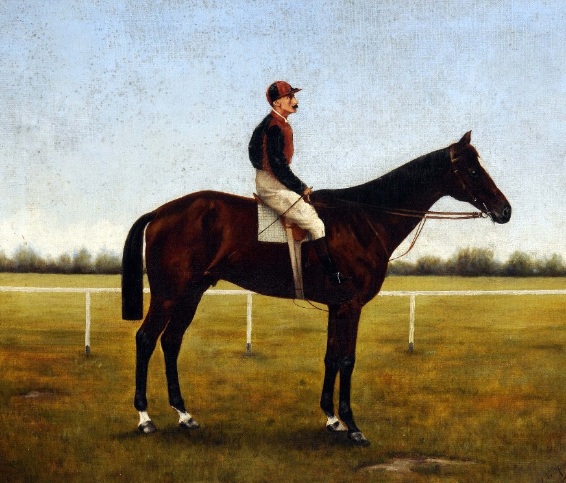 |
||
| I am grateful to Rob Blakeman for the scans of the Nuwara Eliya Governor's Cup from 1890 show opposite. The race was run over 9 furlongs and was won by Rescue. | 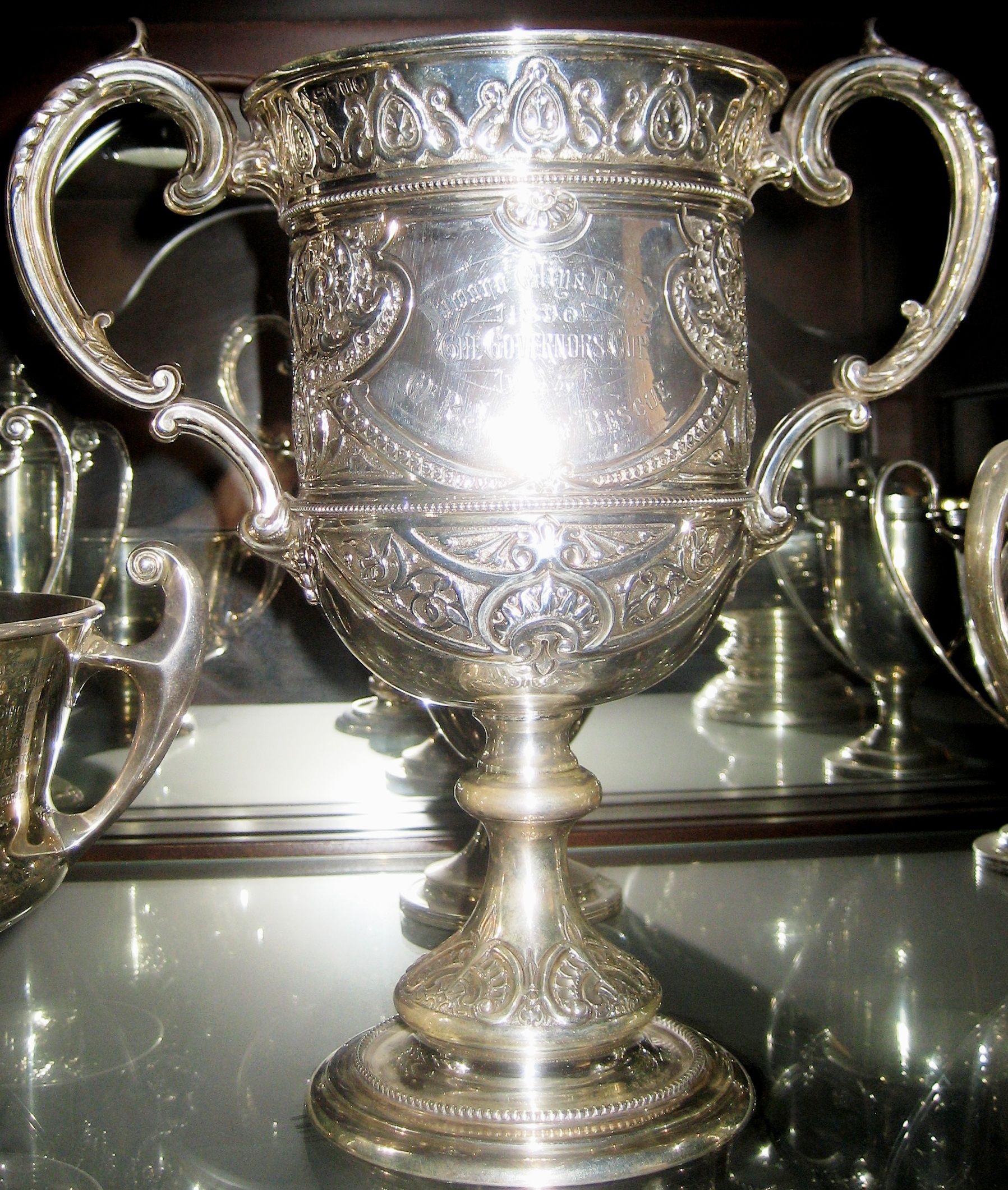 |
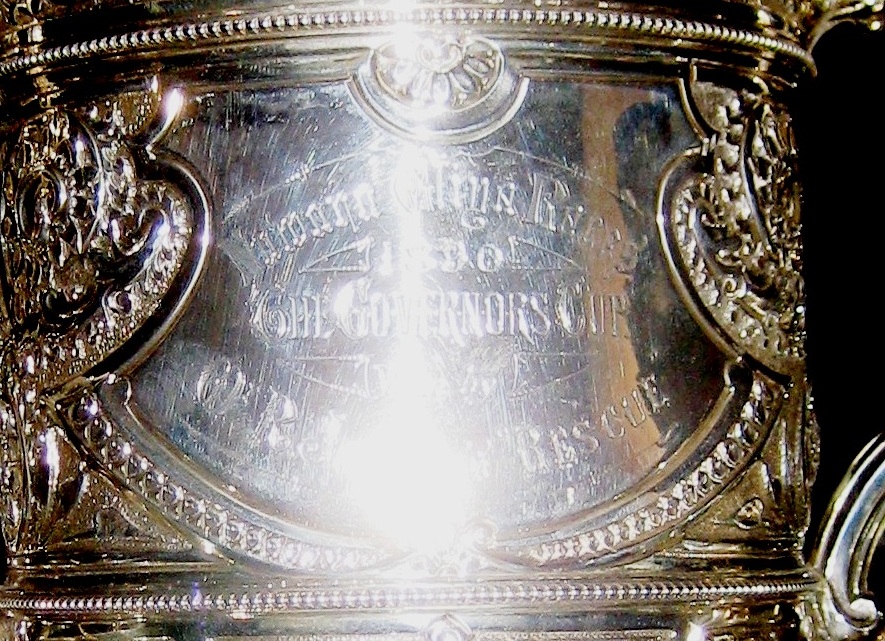 |
|
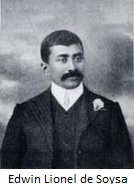 |
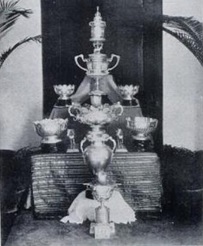 |
Although the inaugural running of the Governor's Cup is said to have been staged as early as 1833, there have been many dual and triple winners. In 1870 and 1871 the Australian horse Darkie, bred by Mr C Baldwin in New South Wales was a dual winner. One of the most successful owners was Edwin Lionel Frederick de Soysa (shown opposite with a selection of his trophies) who won it in 1896 and 1897 with Jack O'Lantern, winning again in 1899 with North British and 1900 with Merloolas. On the back of his successes he built new racing stables at Colpetty in 1905 and promptly won the 1907 Governor's Cup with Footprint. More recently Double Eagle, latterly trained by S V Mathialagan, won in 2008, 2009 and 2010 to complete a remarkable treble. |
|
Today the course is administered by the Sri Lanka Turf Club, the course itself managed by the Sugathadasa National Sports Complex Authority. Annually it stages 5 meetings in April and regular meetings in the period between August and December. Whilst its principal race remains the Governor's Cup over 9 furlongs, which held its inaugural running in 1833, the other feature races are the Independence Cup over 9 furlongs, the Queen's Cup over 10 furlongs and the RTC Magic Million Cup over 9 furlongs. Later in the season, in August the Brown's Cup over 7 furlongs is well attended, and later still the Mayor's Cup over 7 furlongs is held each December. |
|||
| If you have badges, racecards, pictures of the racecourse or further details about the course, including your memories, then email johnwslusar@gmail.com | |||
 |
 |
 |
 |
|||||||||||||||||||||||||||||||||
ISBN 978-0-9957632-0-3 652 pages 774 former courses |
ISBN 978-0-9957632-1-0 352 pages 400 former courses |
ISBN 978-0-9957632-2-7 180 pages 140 former courses |
ISBN 978-0-9957632-3-4 264 pages 235 former courses |
|||||||||||||||||||||||||||||||||
| Copies of the above books are only available by emailing johnwslusar@gmail.com stating your requirements, method of payment (cheque payable to W.Slusar) or Bank transfer, and the address where the book(s) should be sent. | ||||||||||||||||||||||||||||||||||||
|
||||||||||||||||||||||||||||||||||||